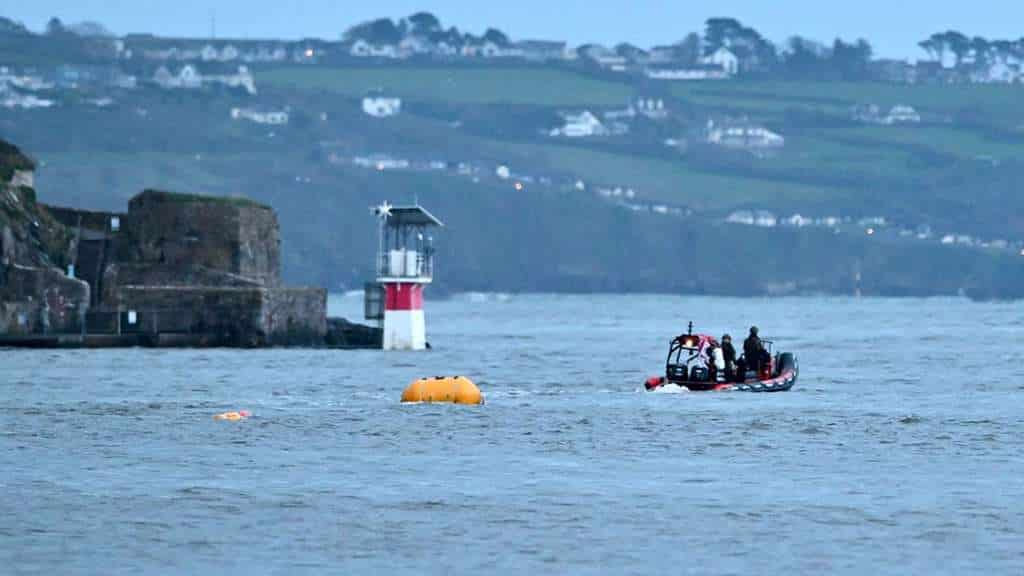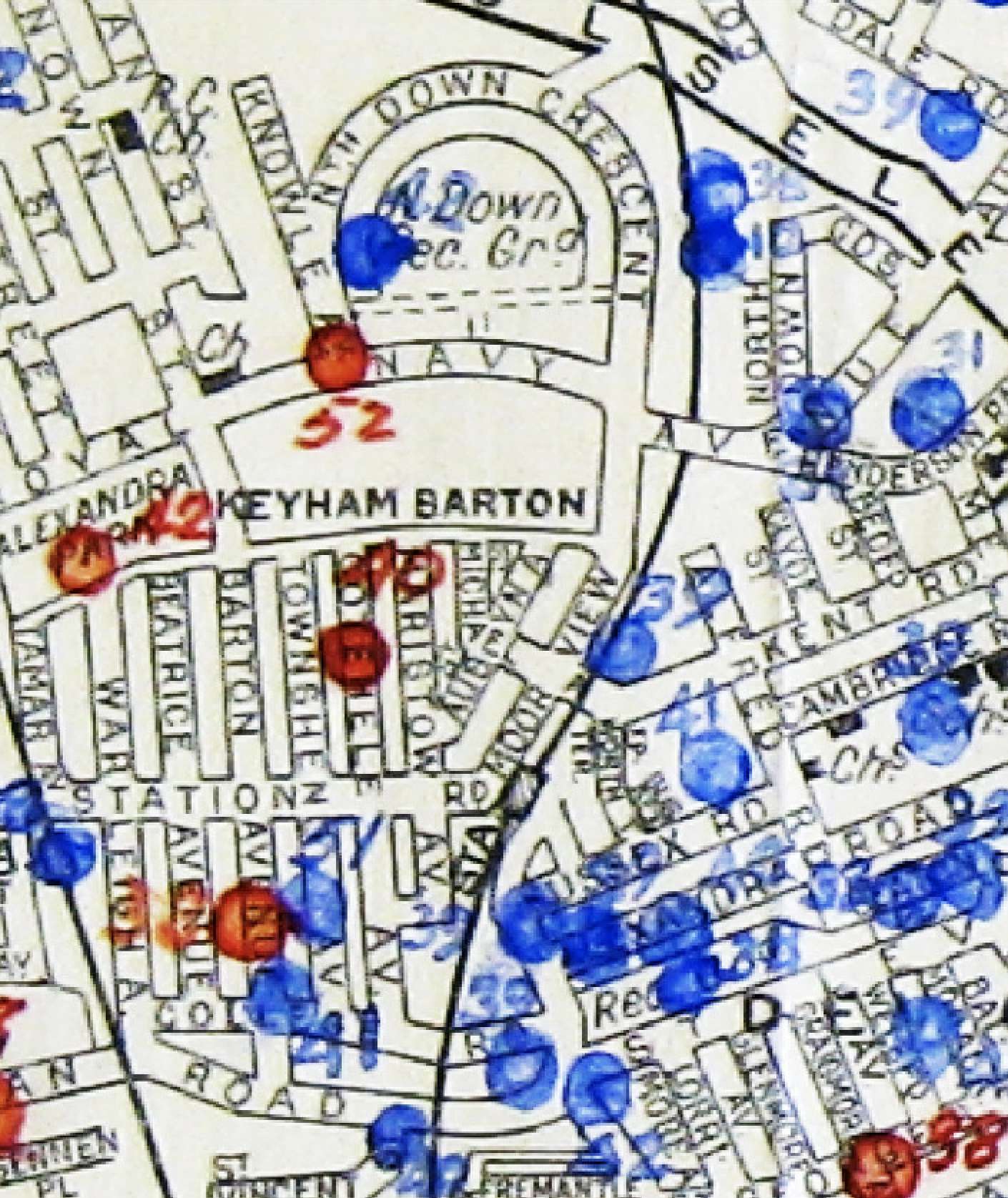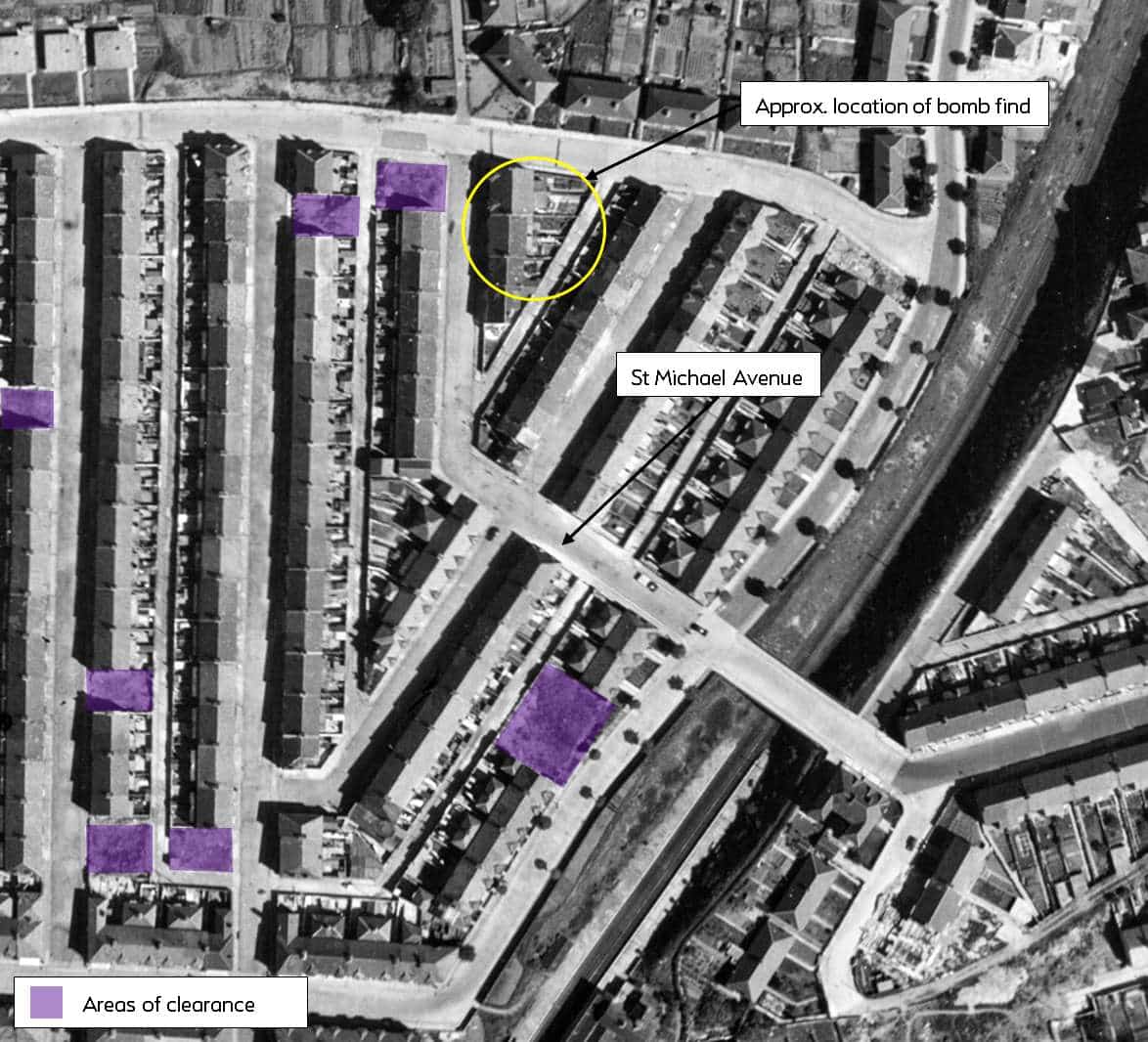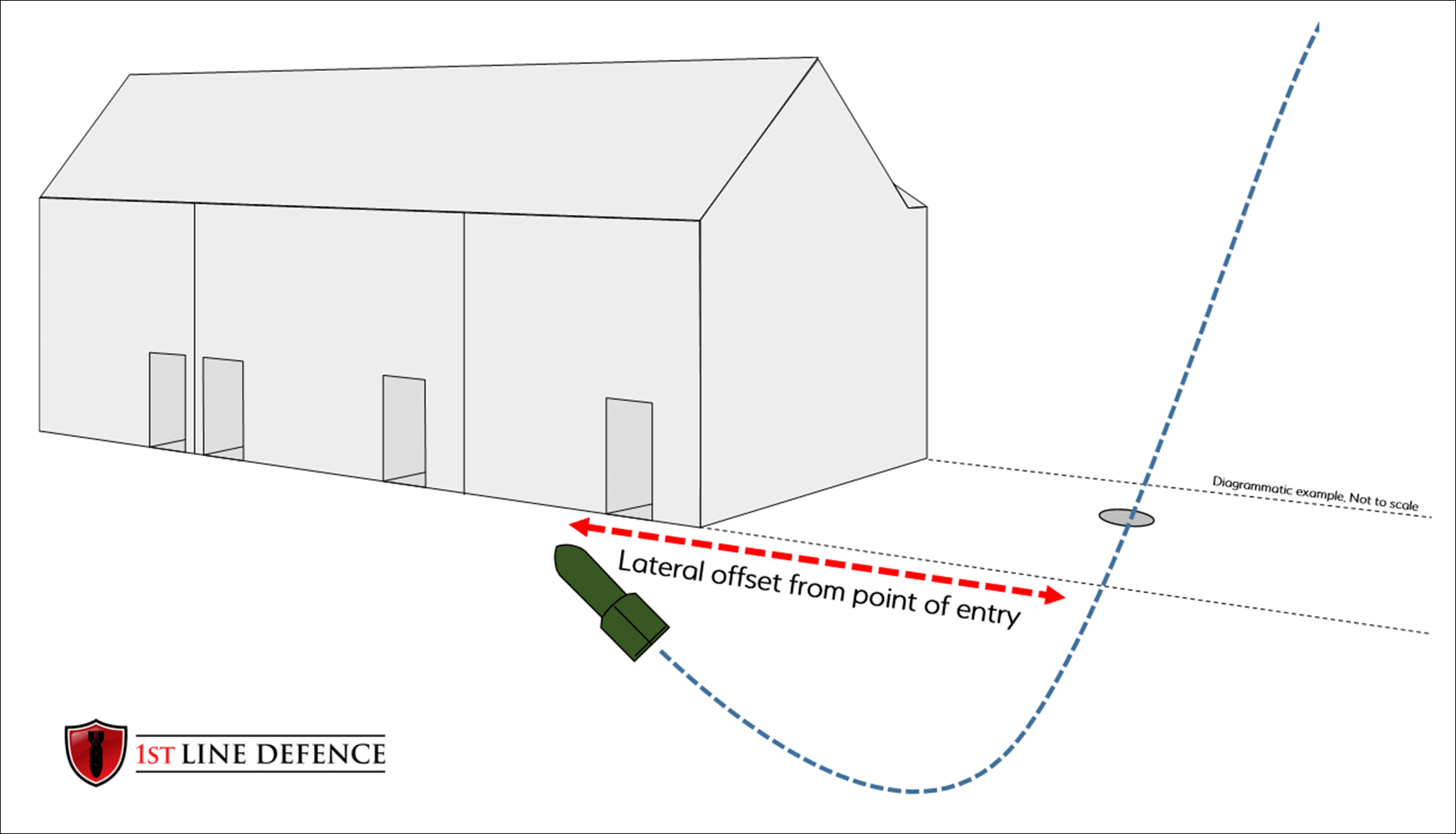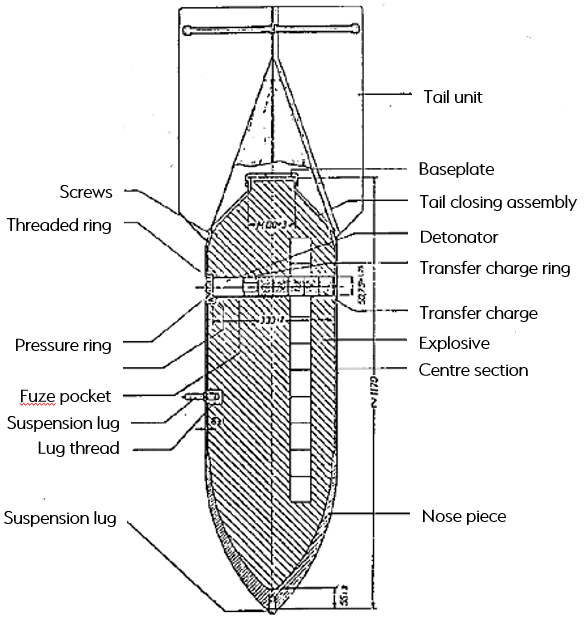Thousands of people were evacuated from their homes in the Keyham area of Plymouth on Tuesday 20th February after the discovery of a WWII Unexploded Bomb (UXB).
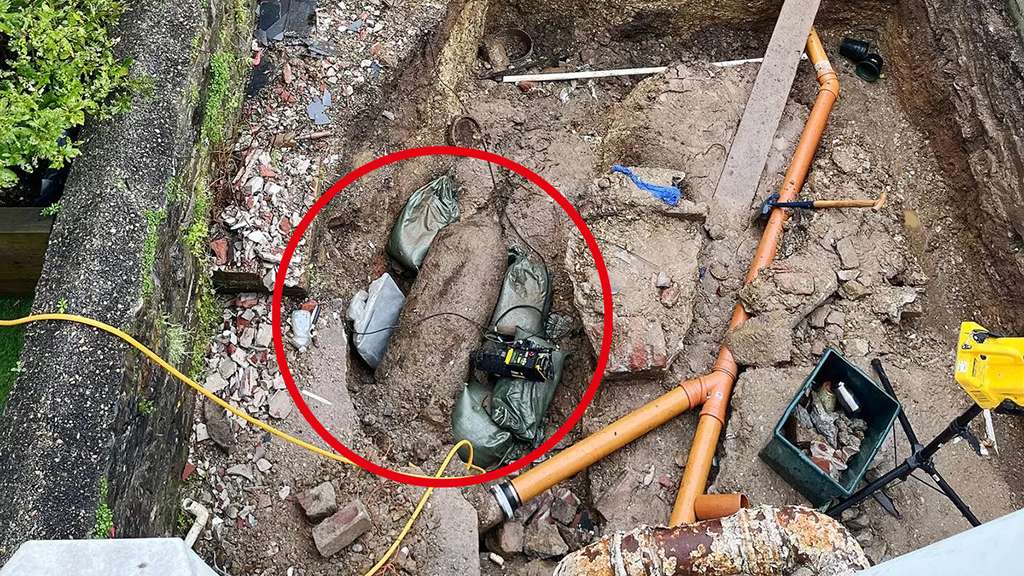
WWII Unexploded 500kg Bomb discovered at St Michael Avenue in Keyham, Plymouth. (Image credit: FPS Images)
The Royal Navy Explosive Ordnance Disposal Team who were deployed to the scene on Tuesday worked tirelessly to uncover and inspect the bomb before declaring their intention to move the device on Friday 23rd February.
Explosive ordnance disposal (EOD) experts carefully removed the device from the property and transported it by road in a military convoy, where it was then taken out to sea and was detonated beyond the breakwater.
Royal Navy Explosive Ordnance Disposal team at sea in Plymouth. (Image credit: FPS Images)
The Ministry of Defence (MoD) confirmed that the 500kg (1,102lb) bomb was safely detonated at 21:51 GMT on 23rd February.
What happened in Plymouth?
Army bomb disposal experts and emergency response services were called following the discovery of a 500kg WWII German Unexploded Bomb on St Michael Avenue in the Keyham area of Plymouth, on Tuesday 20th February.
The man who discovered the suspicious item reportedly ‘hit the item of Unexploded Ordnance (UXO) with a spade’ while helping to dig out the rear garden of his daughters property on St Michael Avenue. Devon and Cornwall Police placed a 200m (650ft) cordon around the site, and declared it a major incident.
The Royal Navy Explosive Ordnance Disposal Team deployed to the scene and the public were asked to avoid the area where possible.
The father who found the bomb spoke to the Plymouth Herald about the experience:
“We actually found it about a week ago. It was just outside the building line and the building inspector said we needed trench of around 650mm. I hit something with a spade but we weren’t sure what it was at first. Since then we’ve had so much rain, the bank collapsed, then there was more rain on Friday and it’s been revealed more and more.”
“It’s about one metre long and half a metre in diameter. We’ve found a cap and a round circle thread sheared off or broke off.”
“By this point my wife said we really should just call the police and alert them. I took photos and sent them off and a sergeant in Exeter rang me five minutes saying he needed to send them off to EOD. Five minutes later there’s a knock on the door and police officers asking to have a look. The next minute they’re suggesting a cordon with a 200m radius.”
History of WWII bombing in Plymouth
St Michael Avenue is in a residential area of Plymouth around 800m west of the HMNB Devonport. These dockyards were the main target of the Luftwaffe during WWII and over 2,500 high explosive bombs were dropped on the City of Plymouth during the war. Due to the inaccuracy of raids, many bombs fell over residential sections of the city – leaving few areas entirely unaffected.
Bomb mapping shows numerous strikes in the general area of the find at St Michael Avenue. A map obtained from local archives shows the locations of an astonishing number of recorded unexploded and delayed action bombs (removed or exploded) which fell in the area.
Consolidated unexploded bomb strikes map of the Keyham area in Plymouth.
Post-war aerial imagery shows a number of houses on St Michael Avenue and the surrounding streets to have been cleared post-war as a result of damage (see images below).
RAF Aerial Photography from 1947 of clearance areas resulting from bombing on and around St Michael Avenue in Plymouth. (Image credit: Historic England)
The closest area of clearance appears to have been directly opposite the location of the bomb find, on the western side of St Michael Avenue. It appears that this damage was probably caused by a bomb which fell on the 21st April 1941 (see raid map below). A written Air Raid Precaution (ARP) report references a high explosive bomb falling on Maristow Avenue (to the west of St Michael Avenue) on the night of the 22/23rd April – it is possible that this referring to the same bomb.
Plymouth bomb map for the night of 21st April 1941. (Image credit: Plymouth Archives)
No other references were found in our archival information to St Michael Avenue other than a City of Plymouth Damage Card from April 1949 which references slight damage that was caused to No. 2 St Michael Avenue on the 13th June 1943. It appears that this was one of the properties near to the bomb location. No reason for this damage could be found elsewhere, so it is not possible to determine whether this damage is potentially related to the UXB find.
Images of the bomb appear to show that it is facing west towards the rear of the houses along the eastern side of St Michael Avenue. Note that the bomb was found perfectly horizontal – this is not uncommon and is generally the result of ‘J-curve’ (whereby a UXB will enter the ground at one location but end its trajectory at a lateral offset to point of entry). This suggests that the bomb may have penetrated the alleyway to the rear of St Michael Avenue, or possibly even the gardens beyond, but come to rest near the house.
The reason for it not being observed at the time will never be known. It was not uncommon for UXB entry holes to be overlooked in areas of vegetation, or within debris or rubble etc. Levels of access also played an important role in the likelihood of UXO going noted or unreported. It may have been that some of the properties in the area were evacuated for a time, and the bomb hole was simply overlooked.
Click on the following link to read more about the bombing history and UXO risk in Plymouth.
Information about the German ‘SC-500’ Bomb
During WWII, the most common high explosive bomb types included the 50kg, 250kg and 500kg – with some raids deploying even larger variants like the 1,000kg and 1,800kg bombs.
The German SC-500 (Sprengbombe Cylindrisch 500), was a series of 500kg high-explosive (HE) general-purpose aircraft bombs which were used extensively by the Luftwaffe during WWII.
The SC-500 used a three-piece drawn steel body with a heavy machined nose cap for armour penetration. The bombs were filled through the base with either Amatol, TNT or Trialen 105, a mixture of 15% RDX, 70% TNT and 15% aluminium powder.
Around the nose of the bomb sometimes a ‘kopfring’ was fitted, which is a metal ring which was designed to prevent ground penetration or to stop forward momentum when hitting water.
The SC-500 was commonly used throughout WWII and was designed for maximum blast effect, and it was often deployed against important targets such as docks or industrial infrastructure.
However, due to inaccurate bombing by the Luftwaffe – some of the bombs were dispatched across a much wider area than their intended targets.
Image showing a schematic drawing of a SC-500 German Bomb which was commonly used during WWII.
How can 1st Line Defence help?
If you encounter a suspicious item on a construction site or home project, the most important thing is not to touch it – move everyone away from the area and contact a UXO Specialist like ourselves or the Police immediately.
1st Line Defence provide a huge range of UXO Risk Mitigation Services, if you would like more information or general advice – contact one of our Sales Team on +44 (0) 1992 245020 or email info@1stlinedefence.co.uk
